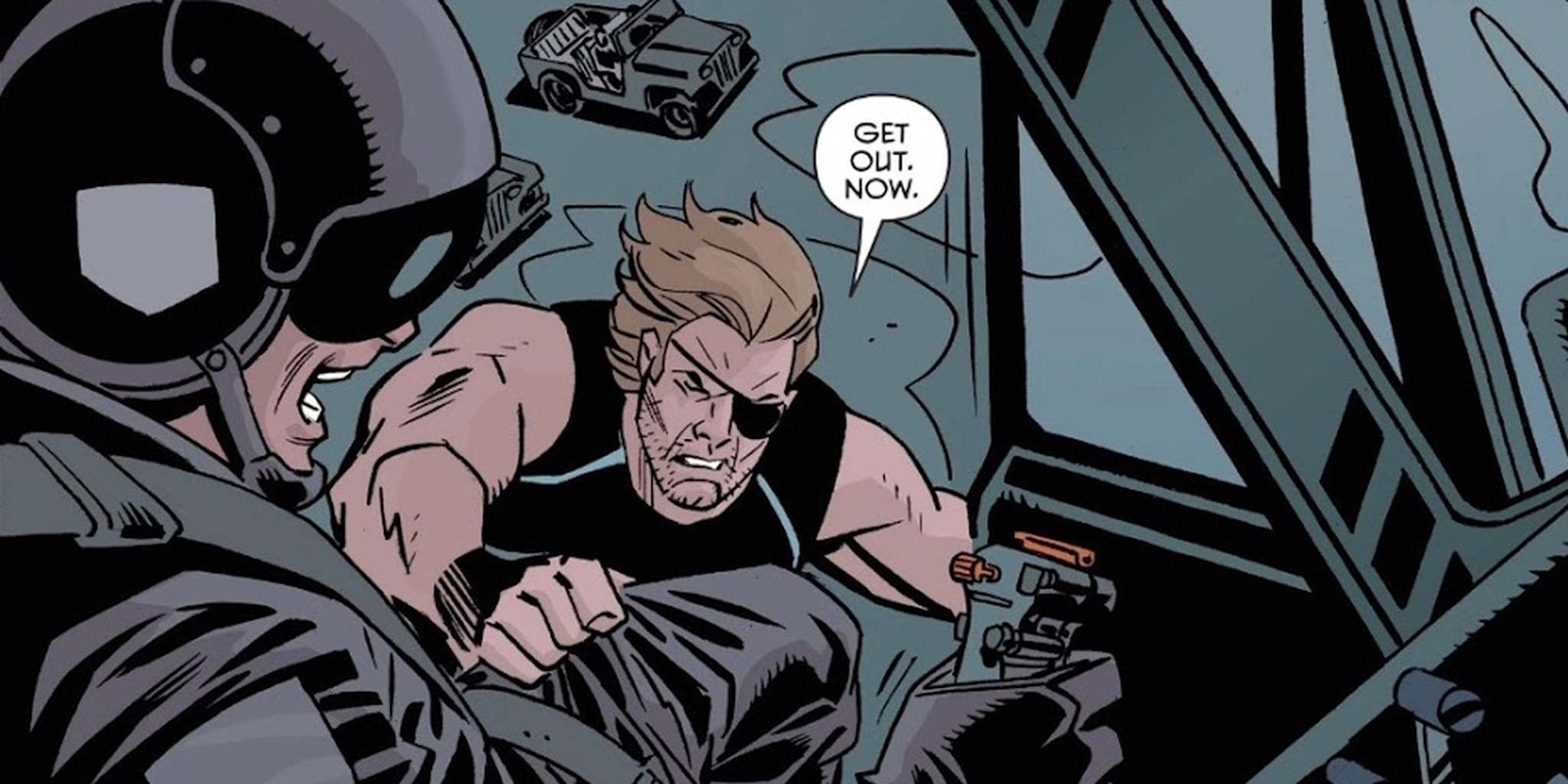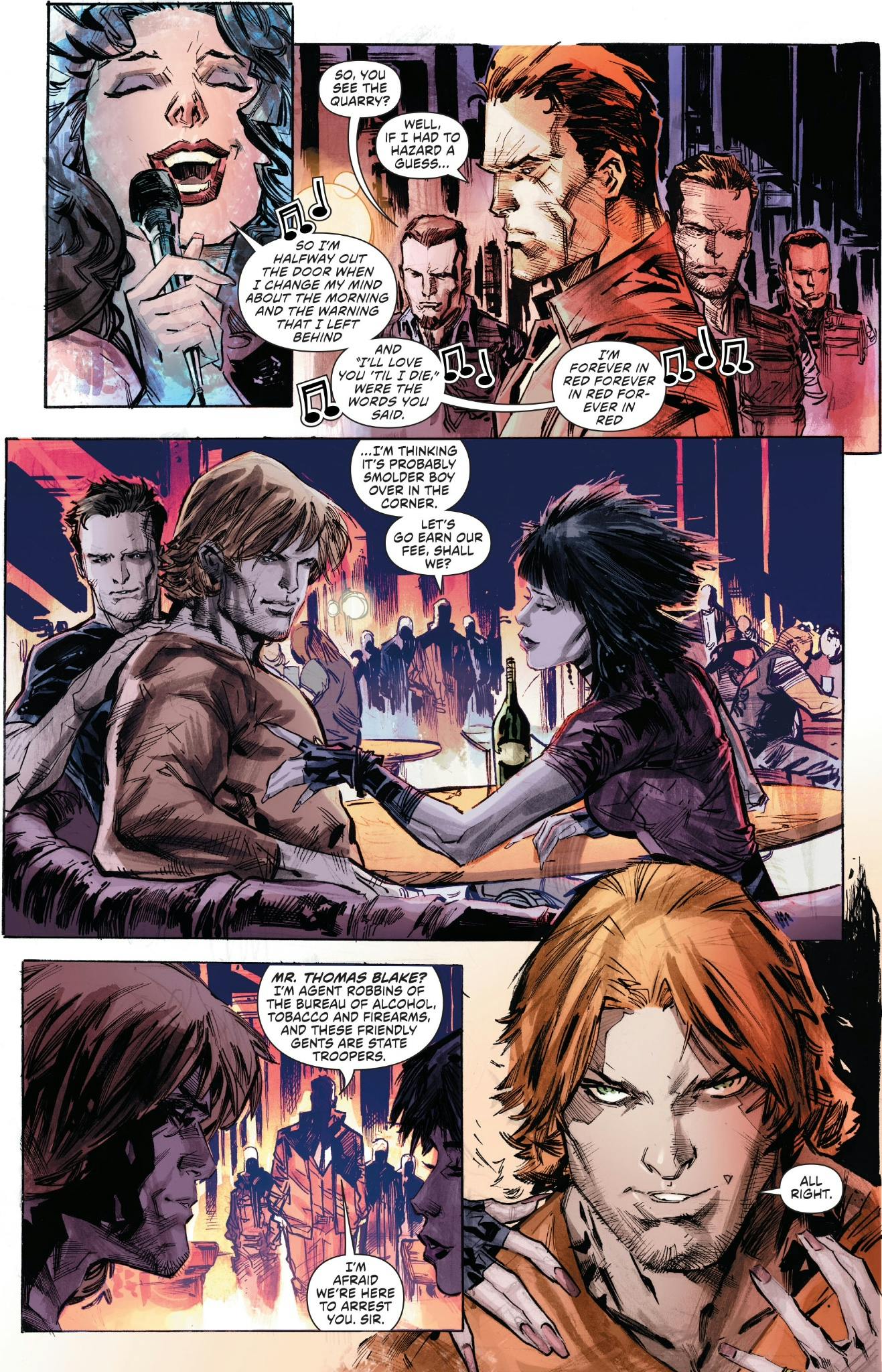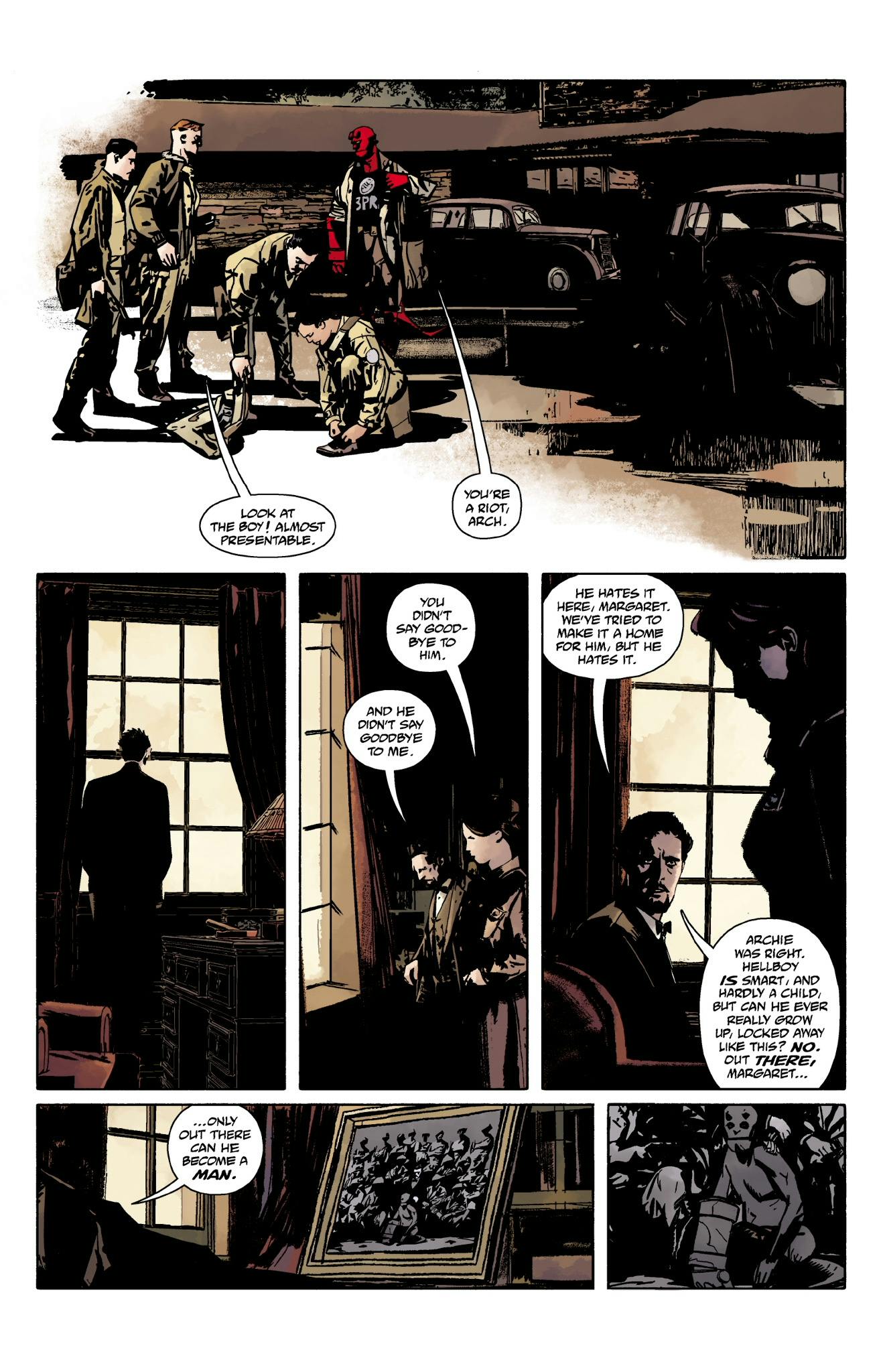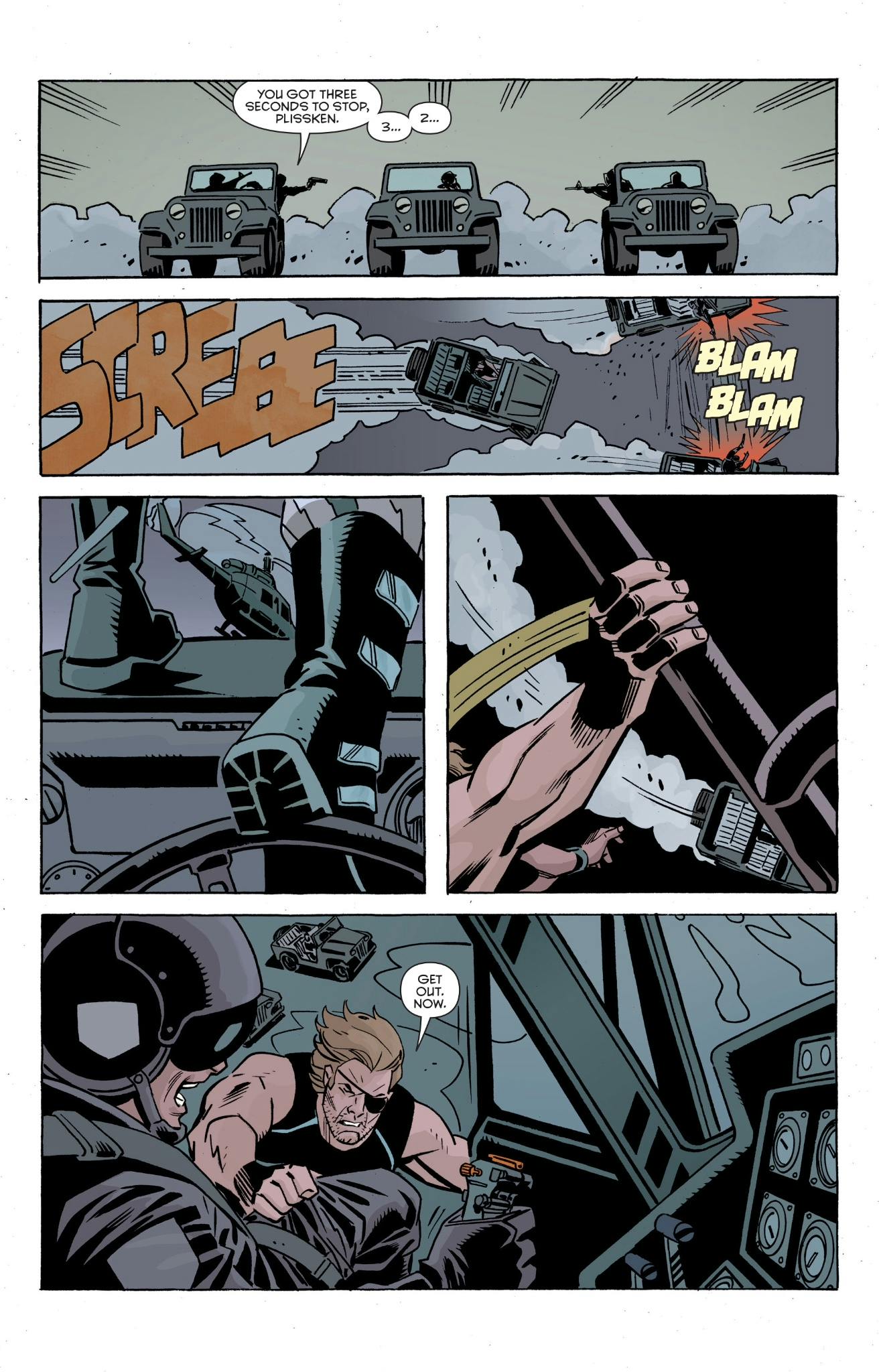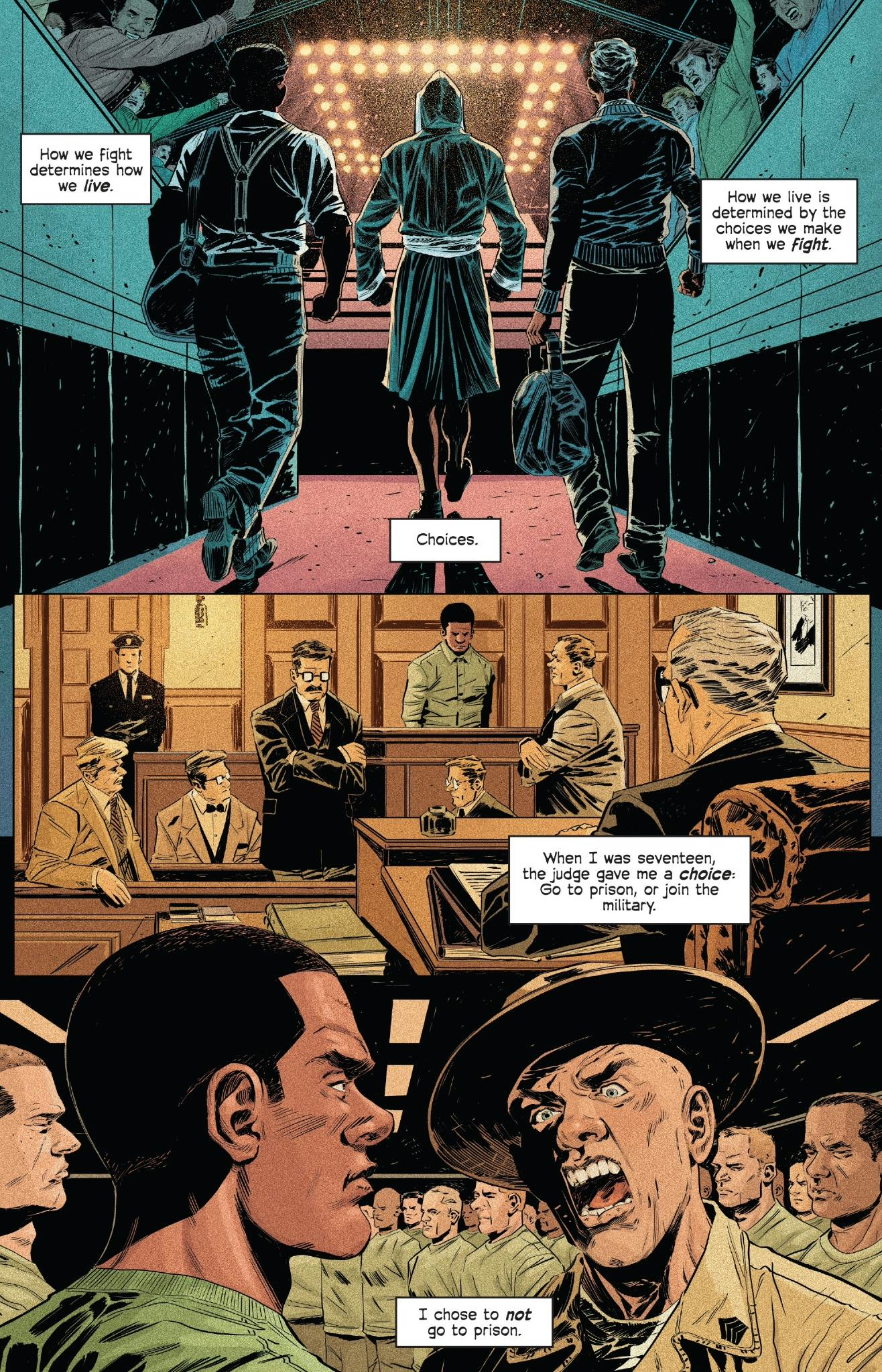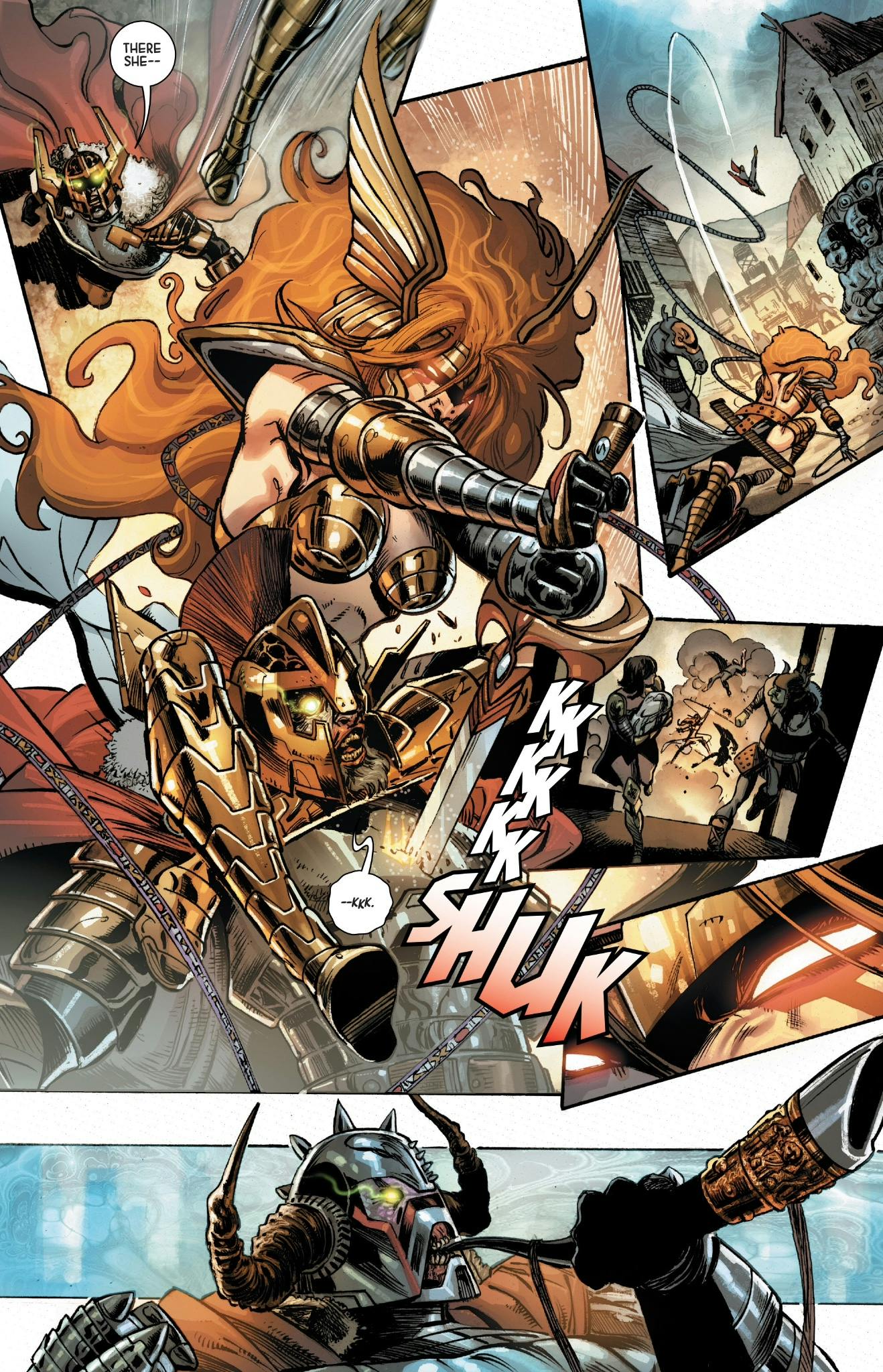If you’ve been to a movie theater this year, it was likely to spend time with characters you already know.
That’s because the protagonists in this year’s top grossers have previously appeared in comics, novels, toy stores, or other movies (sometimes all four). Studio heads want to go with something tried-and-true vs. risking a loss on an original idea.
Not surprisingly, that thinking has spread. Opening up a comics app these days is a lot like going to your local multiplex. Five issue number ones—all recently released—serve as sequel, prequel, or out-and-out reboot. So if you’re fan of Catman, Hellboy, Snake Plissken, Shaft, or Spawn frienemy Angela, I have some good news: There’s a comic book publisher ready to take your money.
Secret Six
When a fan-favorite writer gets a do-over on one of her most iconic runs, you expect greatness. Especially when it’s DC Comic’s Secret Six, where six villains are kidnapped and forced by a mysterious entity to undertake morally dubious missions.
Surprisingly, writer Gail Simone’s new Secret Six is a bit of a snooze. Over the course of 23 pages, hardly anything happens. And a whole third of the book is given over to the relatively uneventful capture of original Sixer Catman, a minor Batman foe who looks like the love child of Cheetara and Sabretooth.
The takedown of Catman happens so shockingly fast, it begs the question “Why do they want this puddytat for a super villain strike force?” It doesn’t help that the opening scene is crudely rendered by artist Ken Lashley and littered with inane dialogue (“Then…I spray in your face so people will know whose property you are”).
The rest of Secret Six makes the most perfunctory of introductions to the remainder of the team, who greet Catman as he comes to in a prison cell of sorts. After a little back-and-forth among the detainees, a stranger’s voice abruptly addresses them over an intercom and threatens to randomly kill someone if they a) don’t solve a riddle and b) don’t choose who’s to die.
Here’s the thing: If I were more invested in the characters, I might care about the team’s welfare. But most of the players are (for now) pretty two-dimensional, with a late addition not even unveiled until the final panel. Given the low stakes and lameness of this last-page reveal, I’ll be skipping the next issue. If you’re a fan of Simone’s previous Secret Six, this may be an interesting curiosity piece. Otherwise, expect to be underwhelmed.
Hellboy and the B.P.R.D.
For much of the last two decades, creator Mike Mignola has defined the visual style of Dark Horse’s Hellboy comics. So it’s always interesting to see the character through the eyes of another artist (in this case Daredevil’s Alex Maleev).
Hellboy and the B.P.R.D. is a handsomely drawn book that details HB’s first field mission. In the first of a five-part series, co-written by Mignola and John Arcudi, wheels are put in motion for a 1950s B.P.R.D. team to fly down to Brazil to investigate 33 deaths that have been attributed to supernatural causes.
My biggest knock on B.P.R.D. is that it’s awfully slow. Just how meandering is it? You’ll witness a long conversation about taking Hellboy to South America, a short discussion with Hellboy about venturing into the field, a brief flashback hitting the highlights of his origin story, a Jeep ride through the Brazilian jungle and then chit-chat amongst villagers in Terroso about their American visitors. This ends not with a late-stage revelation a la Secret Six, but with Hellboy and a teammate in the middle of a conversation.
Given the slow pace and sudden ending, I think this story arc will work better when all five issues are collected in a single volume. While not a particularly illuminating read on its own, pouring over the richly illustrated pages—embellished by long-time Hellboy colorist Dave Stewart—is not a bad way to kill 20 minutes. Still, you’ll probably want to wait for the trade.
Escape From New York
The breakneck pacing of Escape From New York stands in sharp contrast with Secret Six and B.P.R.D. This BOOM! Studios comic, written by Christopher Sebela, picks up mere seconds after John Carpenter’s movie of the same name left off.
If you like the character of Snake Plissken—and, frankly, who doesn’t?—you’ll be happy to know his attitude hasn’t changed in 32 years, much to Sebela’s credit. What’s less successful is Diego Barreto’s art. This is an action-packed issue where too much is crammed into tiny panels, especially the scene where Snake leaps from a speeding car to hijack an in-flight helicopter.
This sequence, a subsequent car chase, and Snake’s running of a deadly gauntlet are too constrained to really follow the proceedings—or get sucked into them. Which is a shame, as Escape From New York’s campy story deserves a more cinematic presentation with lots of splash pages and spreads.
Shaft
Of all these titles, the most perfectly executed is the one I had the lowest expectations for. Dynamite Comic’s Shaft could’ve just been 20-or-so-pages of ass kicking if not for writer David F. Walker choosing to focus on the moments that made the man.
Interrupting the story of John Shaft being pressured to take a dive in a boxing match are a series of flashbacks showing how a street fight sent him to Vietnam in lieu of prison. In the minutes leading up to Shaft having to brawl or bail, we get to see his past and an internal dialogue that ends with “better to be remembered for standing up, than laying down.”
As electric as Walker’s storytelling is, I was initially underwhelmed by Bilquis Evely’s art. I thought it was too flat and workmanlike, then realized she’d actually nailed what comics looked like back in the day. There’s a lot of Dave Cockrum and John Buscema in what she’s doing. But nodding to vintage styles isn’t the only thing that gives Shaft its ’70s vibe, credit should also go to colorist Daniela Miwa and her mellow hues. Together, the three have been able to create something that’s positively dy-no-mite.
Angela: Asgard’s Assassin
Retconned into Marvel Universe after the rights were acquired from writer Neil Gaiman, angelic warrior Angela first popped up in Age of Ultron and regularly appeared as an auxiliary team member in Guardians of the Galaxy. In those pages, she had great chemistry with Gamora, the adopted daughter of Thanos and “deadliest woman in the galaxy.”
In Angela: Asgard’s Assassin, the dynamic between Angela and her companion Sera is, well, less dynamic. Sera doesn’t complement Angela the way Gamora did and seemingly exists for the sole purpose of telling others how fantastic Angela is. She’s more of a device than a character.
To be honest, I’ve always found Kieron Gillen’s prose to be a little flat, but here it’s downright pedestrian. As Angela journeys across the realms to some Wild West-ish border town, a tone-deaf narrator drones “the angel that wasn’t an angel walked across a desert that wasn’t a desert.” Oof.
The saving grace of this book is that its odd story structure showcases the talents of two wonderfully disparate artists. Phil Jiminez tackles the main story and is a perfect fit for this title. Using the talents he honed during three years on Wonder Woman, he’s able to draw the nearly nude Angela without sexualizing her. And unlike Escape From New York’s Diego Barreto, Jiminez knows how to let the action unfold. He manipulates the traditional grid format to imply distance, motion, and more.
Instead of Angela’s B story getting tacked on to the end, it’s strangely embedded in the main story as a flashback. In this issue, we’re treated to Marguerite Bennett’s tale of how Angela saved Sera’s life by killing someone whose life she’d previously saved. Those five pages—beautifully painted by Stephanie Hans—captured my interest far more than anything Gillen scripted. As much as I’d hate to lose Jiminez’s art, I’d much prefer this series to feature Bennett’s accounts of Angela’s past adventures vs. showing her on the run, trying to stay ahead of a horde of Asgardian pursuers.
Art or commerce?
Are these releases just an excuse to make a quick buck, or a sincere attempt to reunite fans with characters they love? I think it depends on the publisher and creative team.
While I thought Secret Six was a pale imitation of its previous incarnation, I’m willing to concede it may just take the book a while to get going. With Gail Simone being a huge comic book fan, I doubt this is a paycheck move. This is her fourth round with the team, so I have to imagine her re-booting of the series comes from a good place. Ditto with Mike Mignola. Hellboy and the B.P.R.D. is, after all, a limited-run series. He obviously had a story he wanted to tell and thankfully isn’t overstaying his welcome.
Even though the business model of BOOM! Studios and Dynamic Comics is to license established characters for some level of profitability, I get the sense the Escape From New York and Shaft writers have a real love for the source material. Escape’s Christopher Sebela has gone on record citing John Carpenter as a personal hero. Not to be outdone, David F. Walker co-wrote a book on blaxploitation and edited the ‘zine Bad Azz Mofo, so clearly he has some interest in John Shaft.
I think the only guilty party here is Marvel Comics. Angela came into the fold as part of a horse trade with writer Neil Gaiman, who now gets to continue his aborted run on Miracleman (its publisher went belly up in 1994, and Marvel acquired the rights 15 years ago). By suddenly making Angela the long-lost sister of Thor and Loki, Marvel is undoing more than 50 years of mythology. There’s always been just nine realms and now there’s a 10th, Angela’s home of Heven. It makes no sense—unless you want to sell more books during the next big Avengers crossover event.
Illustration by Alex Maleev, via Dark Horse Comics
